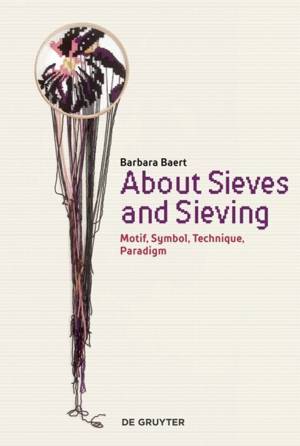
- Retrait gratuit dans votre magasin Club
- 7.000.000 titres dans notre catalogue
- Payer en toute sécurité
- Toujours un magasin près de chez vous
- Retrait gratuit dans votre magasin Club
- 7.000.0000 titres dans notre catalogue
- Payer en toute sécurité
- Toujours un magasin près de chez vous
Description
The sieve exhibits a wide-ranging symbolism that extends across art history, philosophy, anthropology, psychoanalysis, and gender studies. Barbara Baert looks at the sieve from an interdisciplinary perspective and from four different innovative methodological angles: as motif and symbol, as technique and as paradigm.
The sieve as motif goes back to Roman stories the Vestal Virgins. In later times, their impermeable sieve, which - according to legend - they used to fetch water from the River Tiber, was iconographically transferred to Elisabeth I as a sign of her integrity. Furthermore, the long durée life of sieves as symbolic-technical utilitarian object is investigated: in examples from the Jewish folklore, the Berber culture, and ancient Egypt.
Spécifications
Parties prenantes
- Auteur(s) :
- Editeur:
Contenu
- Nombre de pages :
- 134
- Langue:
- Anglais
Caractéristiques
- EAN:
- 9783110606140
- Date de parution :
- 01-06-19
- Format:
- Livre broché
- Format numérique:
- Trade paperback (VS)
- Dimensions :
- 155 mm x 229 mm
- Poids :
- 362 g

Les avis
Nous publions uniquement les avis qui respectent les conditions requises. Consultez nos conditions pour les avis.






